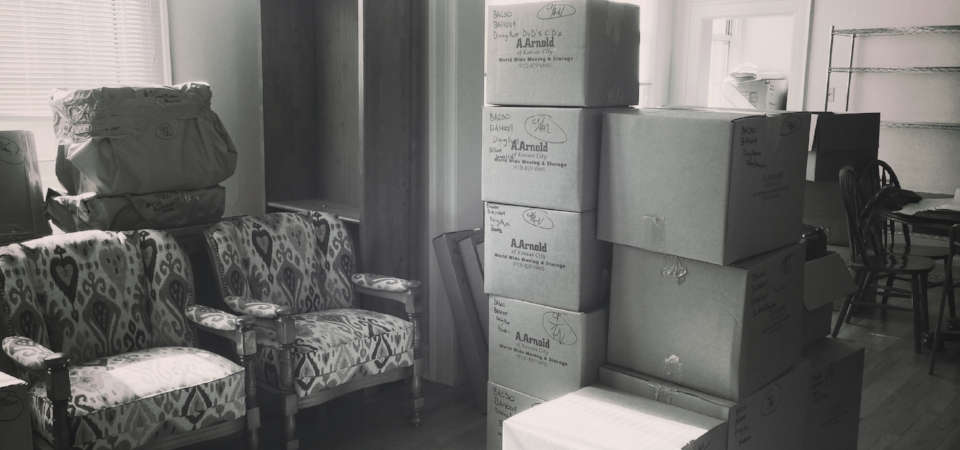MilSpouse Unpacking Strategies Translated to Life
It’s PCS season again. Thankfully the only traveling I’m doing this summer is related to vacation. I’m always up for a good adventure, but when I saw this post on Facebook from a friend whose husband just retired, I felt pretty good about not having to deal with moving this year:
Feeling at loose ends while the crew is here to pack our HHG. Never know what to do while others work hard in my house but I can't help with the task.
And then there was the ship carrying military members’personal vehicles that caught fire. It doesn’t matter how many times you move. Some things are always just troublesome and awkward.
Along with all the hassles of moving, there are some important lessons to be learned. After nine military moves, I have a pretty good unpacking strategy, and I noticed during this last move that it parallels nicely with getting my priorities straight.
1. Clear out everything that doesn’t belong.
- For the move: This is the preliminary step that happens before the packing up process. Do a pre-move purge of things you know you don’t want or need anymore. Unpacking is less overwhelming and time-consuming when you have fewer things to deal with.
- For life: We collect all kinds of other baggage along the way — responsibilities, relationships, personal belongings, grudges, memories — that may have served us for a time, but are just dragging us down as we try to move forward. What can you get rid of so that you can lighten your load?
2. Get the big pieces in place.
- For the move: One of the first things I do when I get keys to my new place is go through and put sticky notes where I want all of the big furniture to go. When the movers come in with our belongings, I don’t want to be wishy washy about where stuff goes because then they’ll just put stuff wherever, and I want to make sure that my husband and I aren’t doing major rearranging after the movers leave. And, I don’t want them to pile boxes where the furniture should sit. Having a clear plan is super helpful.
- For life: Choose a handful of things that mean the most to you — family, friends, job, volunteer work, fitness, etc. — and write each one on a sticky note. Then write down a number on a scale of 1-10, (1 = extremely satisfied, 10 = not at all satisfied) indicating how satisfied you are with how much time you’re able to give each category. Then, write down when you can schedule each of these things into your life. These are the big pieces. Make time for these things first.
3. Get rid of anything that doesn’t belong.
- For the move: You’ve already purged your household items that you knew for sure you didn’t want or need. Now that you’re in your new place, go through everything again as you unpack. Designate one out-of-the-way spot for boxes and packing materials so it’s not cluttering up your living area. Also designate one area for damaged items that you’ll need to hold onto for the claims process. I usually unpack one box at a time, removing the packing materials as I go. I know some of you brave people let the movers unpack for you. I don’t think I could deal with that kind of chaos! I’d much rather go at my own pace. Now that you’re in your new space, you might find there are things that don’t work for you anymore. Sell, donate, store…just get everything out of the way.
- For life: Every move offers you the opportunity to start over. Maybe you were volunteer of the year at your last duty station but you feel like some of your ‘big pieces’ were starting to get neglected. This is the time to adjust priorities and start to free up some time in your schedule. Consider each opportunity carefully. Saying yes to one thing means saying no to something else.
4. Make it pretty.
- For the move: After the furniture is in place and the boxes are unpacked, it’s time to put on the finishing touches to make your house a home — curtains, rugs, art, pictures.
- For life: You’ve purged and prioritized. Now make sure that you add the flair that makes your life special. That might be buying an unlimited pass to a welcoming yoga studio or making sure you give yourself half an hour before lights out to do some leisure reading.
5. Fill in the gaps.
- For the move: It doesn’t matter how many times you’ve moved, it always seems like your new house needs something before it can be fully functional. Once you’ve gotten a clear picture of how all of your household goods fit and have assessed your needs, it’s time to go shopping to fill the gaps.
- For life: Once you’ve scheduled time for your priorities and you’ve figured out some ways to treat yourself, you might find that you have some extra time on your hands. Now you can start to plug in the extras, and the extras are going to look different for everybody. Maybe you’ll start a blog to document your overseas adventures, or maybe you’ll take some classes to learn a new skill. Whatever it is, continue growing all the time, but in a way that leaves you enough time and energy to devote to your priorities.
What are the most important things you’ve learned from moving?

